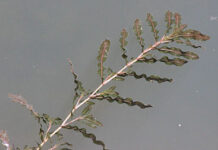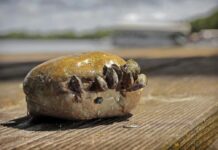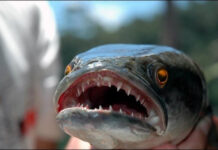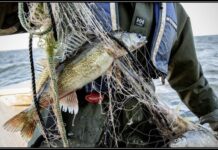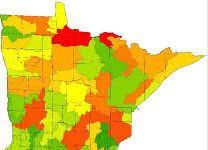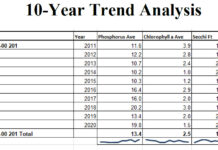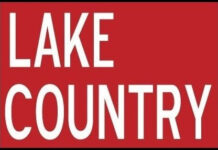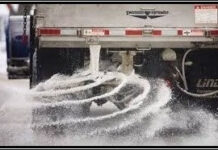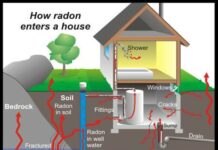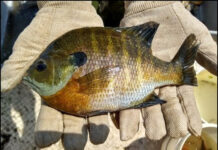There is a good Case For Water Quality Monitoring. Many Coalitions of Lake Associations (COLAs) sponsor lake water quality monitoring programs. Administration of programs vary but basically volunteers collect phosphorus, chlorophyll-a and secchi samples and measurements five times a season. The samples and measurements are delivered to a laboratory for analysis and recording. The data is posted to be accessed for compilation and reporting.
A design developed by Otter Tail County Coalition Of Lake Associations (OTC COLA) has evolved to not only expose water quality aberrations that may warrant immediate attention but also to show long-term trends spanning multiple years.
The OTC COLA Water Monitoring Program nurtures engagement of lake property owners to be aware of the value of lake water quality. The design also recognizes the contribution of the volunteers who collect the samples and promotes the COLA or organization that provides the program. The design has been adopted by multiple COLAs.
The current design layout of the Report includes
- 10-Year Trend Analysis Tables
- Brief explanation of the data
- Recognition of the program sponsor and volunteers
- Direct link access to the DNR Lake Report
- Direct link access to the MPCA Lake Dashboard
- Direct link access to the DNR Health Assessment
- Direct link access to the UMN Lake Browser
- Ecoregion Comparison
- Lake Organizations and Resources
OTC COLA Water Quality Analysis Design- SAMPLE
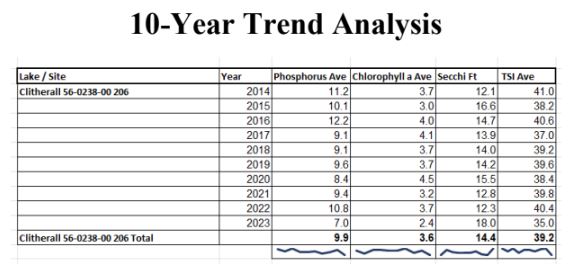
10-Year Trend Analysis Tables
Phosphorus and Chlorophyll-a samples are analyzed and compiled with secchi measurements by the limnology (the study of the biological, chemical, and physical features of lakes and other bodies of fresh water) laboratory. The data is made available on websites to be accessed by organizations and lake property owners. The data usually holds all historical data collected and compiled to date. The data is also uploaded to the Minnesota Pollution Control Agency (MPCA) where it is integrated with data separately collected by the MPCA.
RMB Laboratories (RMB) in Detroit Lakes Minnesota is used by several COLAs and other organizations in Minnesota for analysis of water samples. Result data is posted on the RMB Lakes Program webpage and is made available for creation of individual reports.
It is generally accepted that less than 10 years of water quality testing is inadequate for forming a meaningful water quality trend analysis used in a lake assessment. It is true that any water quality analysis is better than none at all but to make reasonable assumptions of trends 8-10 years is considered a standard. Without continuous water testing it is difficult to assess what condition the water is in.
The OTC COLA design produces a separate report for each lake. It averages the 3 sets of data from each yearly season for phosphorus, chlorophyll-a and secchi disk. A separate table is constructed for each sample site. The table includes all data available for the 10 years compiled. A total average for the 10 years is shown along with a mini-graph indicating a general trend line for the 10 years. The data also includes a TSI (Trophic State Index). The TSI is calculated with the same method as used for the other data sets.
Brief explanation of the data
The Report includes a brief overview of how the data is collected, analyzed and prepared for posting. It also talks about Water Quality Parameter Relationships.
Recognition of the program sponsor and volunteers
The Report is an opportunity to give credit to sponsors for program administration and volunteers for their effort and dedication in supporting water quality monitoring of their lakes.
Direct link access to the DNR Lake Report
One-click access is provided to go directly to the Minnesota Department of Natural Resources (MN DNR) Lake Finder page for the reported lake. The MN DNR page provides detailed information about the lake along with an interactive map interface.
Direct link access to the MPCA Lake Dashboard
One-click access is provided to go directly to the Minnesota Pollution Control Agency (MPCA) Lake Dashboard for the reported lake. The page shows the MPCA information about the lake and an interactive map. The “USE” menu link shows a really cool Recreational Suitability Measure bar graph.
Direct link access to the DNR Health Assessment
One-click access is provided to go directly to the DNR Health Assessment. Users can compare a lake’s health measures to other nearby lakes. Along with graphics showing lakes’ relative water quality, biology, and hydrology, WHAF for Lakes includes information about basic lake characteristics and lake stewardship.
Direct link access to the UMN Lake Browser
The Minnesota Lake Browser is an online interactive lake water clarity/quality tool with Landsat-derived classifications of lake clarity of more than 10,500 lakes measured 11 times from 1975-2018. It also includes searchable statewide maps of chlorophyll concentrations and CDOM levels for several recent years. The chlorophyll classifications are based on the European Sentinel-2 satellites.
Ecoregion Comparison
The Ecoregion where the lake is located is important to understanding lake health. The report provides the ranges for the Ecoregion for comparison with the lake.
Lake Organizations and Resources
The Report lists organizations, agencies and other resources. It is an opportunity to promote the COLA or other organization to attract lake property owner engagement.
- Lake COLA information
- Newsletters
- Website
- Brochure
- Contacts
- Information resources
- www.lakeadmin.org
Everything Lake Organization Administration - MPCA
- MN DNR
- www.lakeadmin.org
Summary
The Water Quality Analysis Report can provide much more than just data for lake property owners. It also gives the opportunity to engage them to be better educated and more aware of water quality, and promote attention to policies and practices that benefit the lake. It is also an opportunity to make them aware of the benefits of being involved in lake organizations.
OTC COLA Water Quality Analysis Design- SAMPLE
John Kruse lakehelp2@gmail.com`

